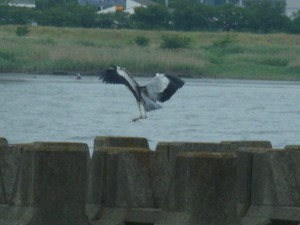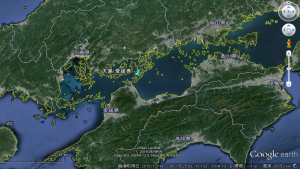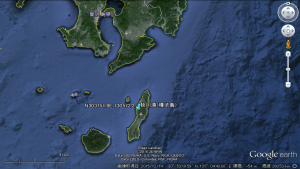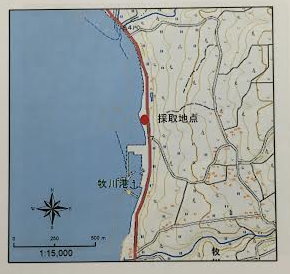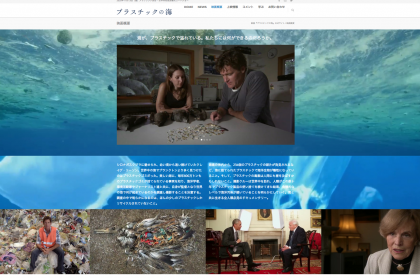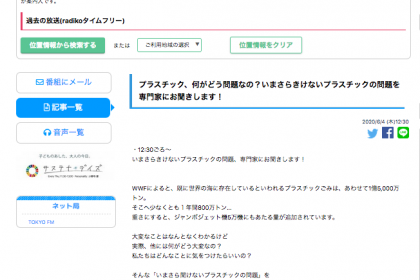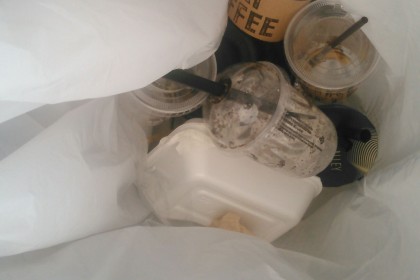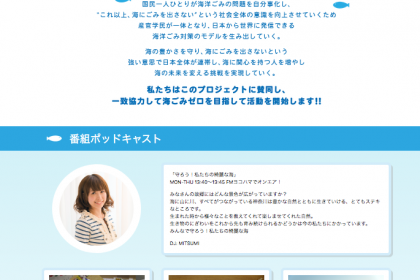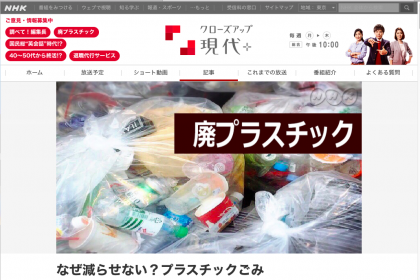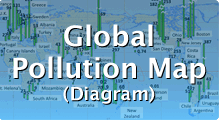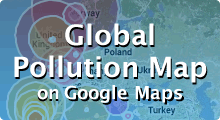2017/9/21-29の9日間、サンプリングのためインドへ行ってきました。
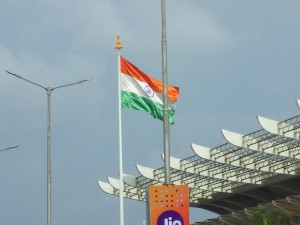
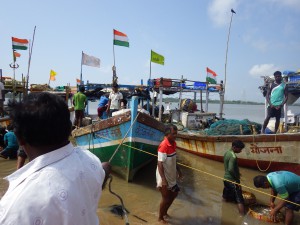
今回は滞在期間中で堆積物、地下水、河川水、レジンペレット、プラスチック製品が
微細化したフラグメント、そして海面に浮遊しているマイクロプラスチックを採取しました。
滞在場所はインドの西側、Mumbai と Goa の2地点ですが、ペレットとフラグメントはGoaの2地点で採取しました。
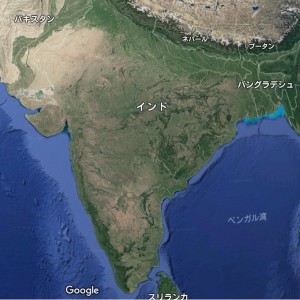
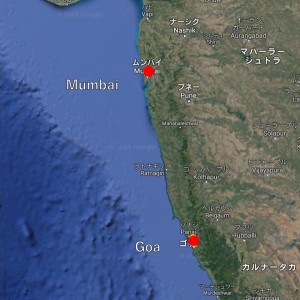
雨季ということもあり、到着の前日まで大雨で空港も閉鎖されていたとのことでしたが到着時には止んでおり、無事にインドでの滞在を始めることが出来ました。
Mumbaiは人・車で溢れており、クラクションが賑やかな大都市でした。
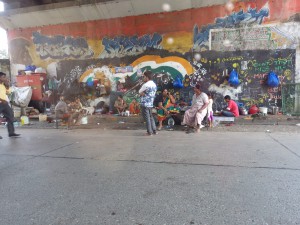
2日目以降Mumbaiで堆積物・地下水・河川水を採取したのち
24日からGoa へ移動しました。
GoaはMumbaiと比較すると人や交通量は少なく、
リゾート地として親しまれている場所でした。
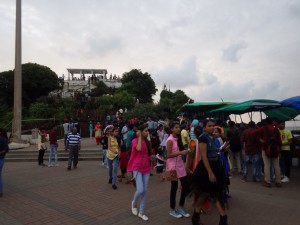
25日、Colvaという地点で最初のペレット・フラグメント採取を行いました。
浜の近くには駐車場が整備されており、海のセーフガードの人がいるような
海水浴で人が多く集まる砂浜でした。
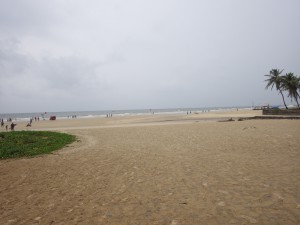
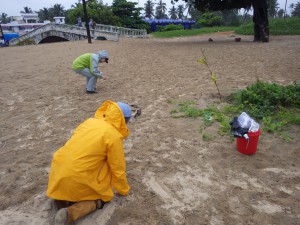
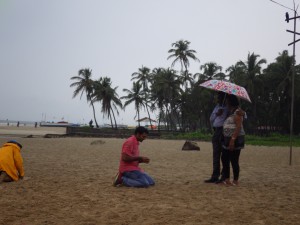
形状が分かるような大きなプラスチックごみはあまり目につきませんでしたが、
よく探せばペレットは存在していました。
先方の研究所の方と協力して探しましたが途中で雨が降ってきてしまい、
濡れた砂の粒とペレットを識別するのがなかなか難しかったです。
必要量採れたため、この日は作業を終了しました。
翌日26日、colvaから約30km北に位置するCaranzalemという地点でペレットと
フラグメント採取をしました。
この地点はあまり人がいなく、陸に引き上げられた船がいくつかあるような所でした。
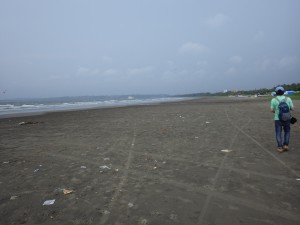
ペットボトルや歯ブラシなど大きなプラスチックごみも良く目につく状況でした。
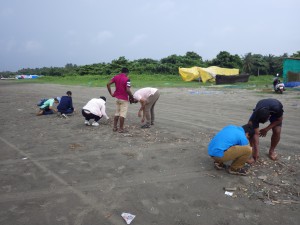
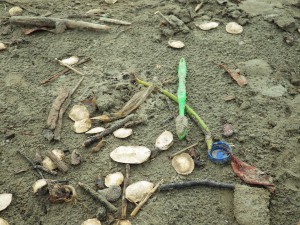
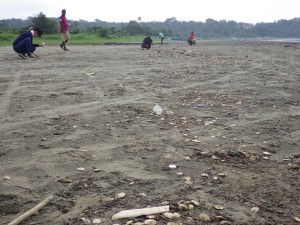
全員で満潮線上を広く探し、2時間ほどかけてやっと分析に適したペレットと
フラグメントを必要量集めることが出来ました。
Colva とCaranzalemのサンプルはそれぞれ分析してIPW MAPに載せています。
(Colvaはサンプリングに行く前に送って頂いたサンプルの分析結果となっています)
是非ご覧ください。
2017年9月8,9日で、仙台へサンプリングに行ってきました。
8日に二枚貝(マッセル)を3地点で採取し、
9日に菖蒲田海水浴場でペレットとプラスチック破片を採取しました。
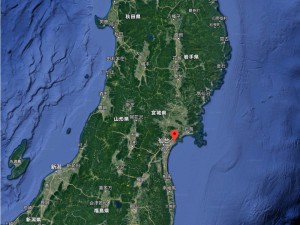
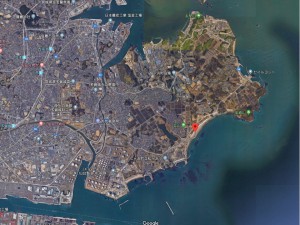
今回は9日に先生の講演会があり、
講演会の後にそのまま参加して下さった皆さんと一緒に実際に砂浜へ行って
ペレットやプラスチック破片を探す、といった流れでした。
講演会の会場は「七ヶ浜国際村」。
車で少し山を登ったところにあり、木々の緑が気持ち良い綺麗なところでした。
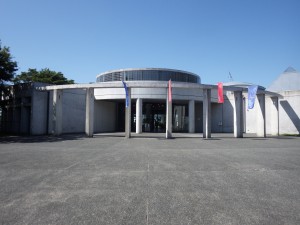
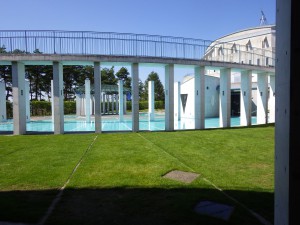
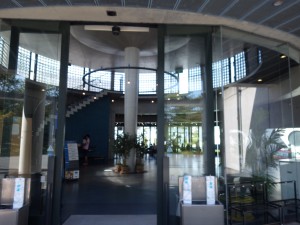
講演会の様子。皆さん、熱心に写真やメモをとりながら聞いていらっしゃる姿が印象的でした。
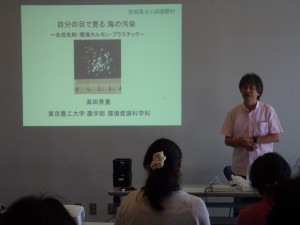
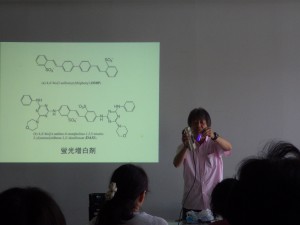
講演会後、砂浜に移動した後の様子。
ちなみに2016年にもこの場所に来ているのですが、
海岸沿いの整備が進んでいて新たに道路が舗装されていたりと、
1年間で大きく変化していました。
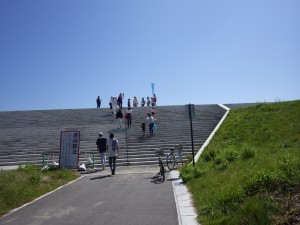
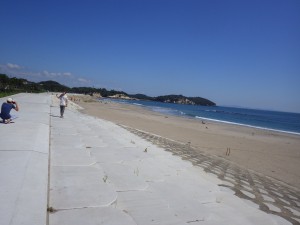
菖蒲田海水浴場は、海藻や木の枝などの自然物と一緒に
形が分かるような大きなプラスチックごみが数多く存在していました。
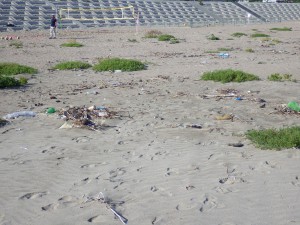

大きなプラスチックごみに紛れて、
よく見るとペレットもこのように数多く確認されました。
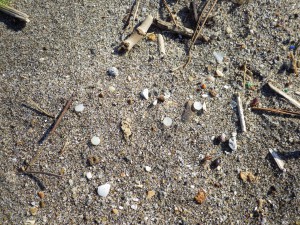
ただ白いペレットが多く、
分析に適している黄変したペレットを探すのに時間がかかりました。
大きさ5mm以下のプラスチック破片も同じように採取しました。
こちらは黄変ペレットと比較すると見つけやすく、
緑や青など色別に分析できる量を採取することが出来ました。
こちらのサンプルは現在分析中です。分析が終わり次第、IPWマップにてデータをご報告いたします。
In response to the New York State government bill that would block the New York City Bag Law, due to go into effect on February 15, 2017
“Plastic bag regulation: top priority given at the United Nations HQ, Informal Consultative Process on Oceans and the Law of the Sea, 2016”
The public may commonly associate microplastics with microbeads from personal care products, yet plastic bags are a significant source of microplastics that accumulate toxins and deserve immediate consideration from policymakers due to negative environmental and health implications.
“Plastic” is a term collectively used for various polymers, of which polyethylene (PE) is the most widely used, surpassing polypropylene (PP), polystyrene (PS), polyvinyl chloride (PVC), and polyethylene terephthalate (PET). The most common application of PE is plastic shopping or carryout bags (“plastic bags” hereafter), which have a key lightweight or low-density physiochemical property. Since PE is lighter and has a lower density than water, it can float on the water’s surface, enabling it to travel long distances, as far as the open ocean. On the sea’s surface, PE is exposed to sunlight, leading to it breaking down into smaller pieces or microplastics.
One of the major problems of microplastics in the marine environment is their ability to accumulate pollutants, such as oil, PCBs and organochlorine pesticides in seawater through the sorption process. The sorption of pollutants to plastics is considered the “toxification” of plastics. The critical factor of PE in the marine environment is that it has the highest capacity of toxification among all the polymers1, 2). Therefore, International Pellet Watch (IPW, www.pelletwatch.org) is utilizing PE resin pellets as the medium to monitor marine pollution.
Ingestion of microplastics by shellfish3) and fish4, 5) has been reported in recent studies. Because plastics carry pollutants, ingestion of plastics by marine organisms can be considered internal exposure of pollutants to the biota. We have confirmed the transfer of pollutants from ingested plastics to the biological organs of seabirds6). Laboratory experiments have also confirmed the similar plastic-mediated transfer of chemicals to fish tissue7). Furthermore, recent publications8-11) suggest adverse effects of some biological functions, such as the reproduction of oyster, caused by ingested plastics and associated chemicals11). The amounts of plastics used in the experiments were larger than those observed in the current marine environment. However, the cumulative quantity of plastic input to the ocean is predicted to increase by an order of magnitude by 202512). The amounts of plastics in the marine environment are steadily increasing and microplastics are persistent in the marine environment since they cannot be removed once they enter the ocean.
Figure 1 (http://www.pelletwatch.org/maps/map-1.html) illustrates that polyethylene (PE) is dispersed throughout the globe and that all the pellets are toxified with PCBs. The same toxification occurs for PE fragments derived from plastic bags because they are made of the same polymer type as the resin pellets. Policymakers in New York City, New York State, and Northern New Jersey should be taking note of the extremely high concentration of PCBs found in the PE pellets in the New York/New Jersey regions, including the Great Lakes.
As a precautionary principle, we must reduce the inputs of plastic waste to the sea. Government policies, such as plastic bag bans, fees and taxes on single-use carryout bags, have already shown to be successful in cities, states, and countries around the world, leading to significant reduction of plastic bag usage and effectively working as a countermeasure against plastic pollution.
As mentioned above, PE, the most commonly used polymer, has the highest sorption capacity among all polymers and is most readily transformed into microplastics. At the 17th meeting of the United Nations Open-ended Informal Consultative Process on Oceans and the Law of the Sea which was held United Nations Headquarters in New York City, I stated that banning PE products must be considered as a top priority13). Protecting the New York City bag fee law is critical for reducing marine pollution caused by polyethylene, the plastic polymer with the highest toxification capacity entering our precious waterways.
Thank you so much for your attention.
Hideshige Takada, Ph.D
Coordinator of International Pellet Watch (IPW)
Professor
Laboratory of Organic Geochemistry (LOG)
Tokyo University of Agriculture and Technology,
Fuchu, Tokyo 183-8509, Japan
References
1) Endo, S.; Takizawa, R.; Okuda, K.; Takada, H.; Chiba, K.; Kanehiro, H.; Ogi, H.; Yamashita, R.; Date, T., Concentration of Polychlorinated Biphenyls (PCBs) in Beached Resin Pellets: Variability among Individual Particles and Regional Differences. Mar. Pollut. Bull. 2005, 50, (10), 1103-1114.
2) Rochman, C. M.; Hoh, E.; Hentschel, B. T.; Kaye, S., Long-Term Field Measurement of Sorption of Organic Contaminants to Five Types of Plastic Pellets: Implications for Plastic Marine Debris. Environ. Sci. Technol. 2013, 47, (3), 1646-1654.
3) Van Cauwenberghe, L.; Janssen, C. R., Microplastics in bivalves cultured for human consumption. Environ. Pollut. 2014, 193, (0), 65-70.
4) Lusher, A. L.; McHugh, M.; Thompson, R. C., Occurrence of microplastics in the gastrointestinal tract of pelagic and demersal fish from the English Channel. Mar. Pollut. Bull. 2013, 67, (1–2), 94-99.
5) Tanaka, K.; Takada, H., Microplastic fragments and microbeads in digestive tracts of planktivorous fish from urban coastal waters. Scientific Reports 2016, 6, 34351.
6) Tanaka, K.; Takada, H.; Yamashita, R.; Mizukawa, K.; Fukuwaka, M.-a.; Watanuki, Y., Facilitated Leaching of Additive-Derived PBDEs from Plastic by Seabirds’ Stomach Oil and Accumulation in Tissues. Environ. Sci. Technol. 2015, 49, (19), 11799-11807.
7) Wardrop, P.; Shimeta, J.; Nugegoda, D.; Morrison, P. D.; Miranda, A.; Tang, M.; Clarke, B. O., Chemical Pollutants Sorbed to Ingested Microbeads from Personal Care Products Accumulate in Fish. Environ. Sci. Technol. 2016, 50, (7), 4037-4044.
8) Rochman, C. M.; Hoh, E.; Kurobe, T.; Teh, S. J., Ingested plastic transfers hazardous chemicals to fish and induces hepatic stress. Scientific Reports 2013, 3, 3263.
9) Browne, M. A.; Niven, S. J.; Galloway, T. S.; Rowland, S. J.; Thompson, R. C., Microplastic Moves Pollutants and Additives to Worms, Reducing Functions Linked to Health and Biodiversity. Current Biology 2013, 23, (23), 2388-2392.
10) Lönnstedt, O. M.; Eklöv, P., Environmentally relevant concentrations of microplastic particles influence larval fish ecology. Science 2016, 352, (6290), 1213-1216.
11) Sussarellu, R.; Suquet, M.; Thomas, Y.; Lambert, C.; Fabioux, C.; Pernet, M. E. J.; Le Goïc, N.; Quillien, V.; Mingant, C.; Epelboin, Y.; Corporeau, C.; Guyomarch, J.; Robbens, J.; Paul-Pont, I.; Soudant, P.; Huvet, A., Oyster reproduction is affected by exposure to polystyrene microplastics. Proceedings of the National Academy of Sciences 2016, 113, (9), 2430-2435.
12) Jambeck, J. R.; Geyer, R.; Wilcox, C.; Siegler, T. R.; Perryman, M.; Andrady, A.; Narayan, R.; Law, K. L., Plastic waste inputs from land into the ocean. Science 2015, 347, (6223), 768-771.
13) Report on the work of the United Nations Open-ended Informal Consultative Process on Oceans and the Law of the Sea at its seventeenth meetingLetter dated 20 July 2016 from the Co-Chairs of the Informal Consultative Process addressed to the President of the General Assembly (see page 11 for my statement) http://www.un.org/depts/los/consultative_process/documents/ICP_Report_2012
9月9日から10日の2日間、東北マリンサイエンスのmussel(二枚貝)サンプリングに同行し、仙台と気仙沼の大島でペレット採取を行ってきました。
今回ペレット採取を行ったのは、一年前(2015年度)の同サンプリングでペレットを採取した仙台の菖蒲田海水浴場の結果を踏まえたためであり、今年もペレットを採取し分析することにしました。
~2015年度に採取されたペレットによるJapanese Pellet WatchのPAHsの結果~
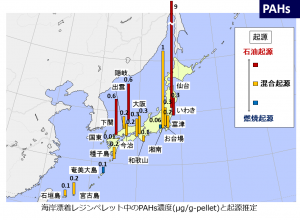
菖蒲田海水浴場のPAHs(多環芳香族炭化水素)の濃度が、日本沿岸域18地点のなかで最も高いものでした。
また、PAHsは石油起源(ex.石油の漏えい)と燃焼起源(ex.自動車やエンジンの排出粒子)がありますが、菖蒲田海水浴場のPAHsは石油起源の寄与が大きいものでした。
世界と比較しても菖蒲田海水浴場のPAHs濃度は中程度より高い結果でした。
(※他の分析対象成分の分析結果についても今後投稿していけたらと思います。)
そのため、この結果が一時的なものなのか、今年も同じ結果となるのか、調査する必要がありました。
~サンプリング風景~
ペレット採取を行ったのは、10日。まずは菖蒲田海水浴場。
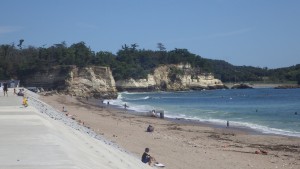
砂浜には大量の漂着物とプラスチックごみがありました。ペレットも散りばめられたかのようにたくさん見つかりました。
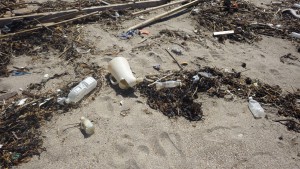
菖蒲田海水浴場の海開きは、震災以降休止していましたが、今年はプレオープンとして10日間開催されたようです。
あいコープみやぎの職員の方々とそのお子様と共にペレットを採取しました。ご協力ありがとうございました。

ご協力により、試料に用いる黄変PE(ポリエチレン)ペレットは621粒も採取できました。
10月分析予定で、結果はまた後程報告させていただきます。
続いては、気仙沼に移動し大島へ。
こちらも砂浜には漂着物の木片とプラスチックごみが見られました。
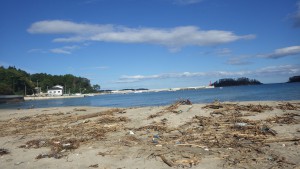
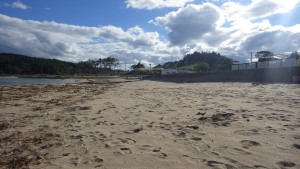
しかし、大島では小田の浜海水浴場と田中浜のどちらもペレットがあまり見当たりませんでした。
なんとか見つかった黄変PEペレットで分析する予定です。
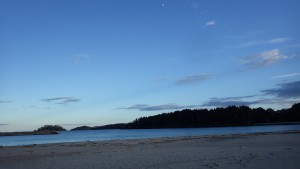














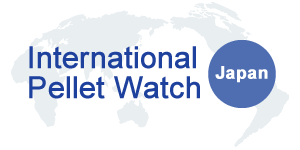












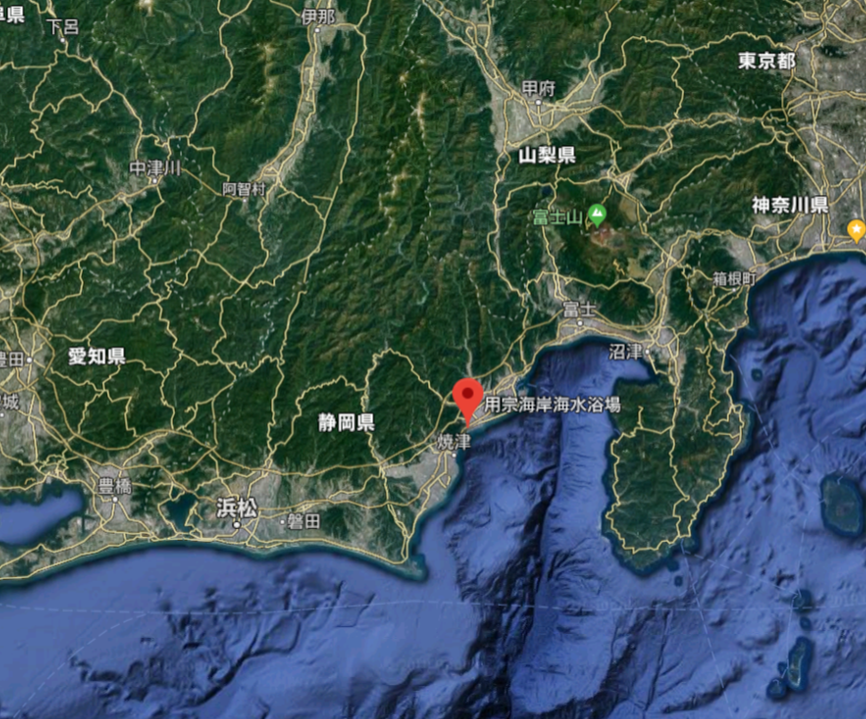
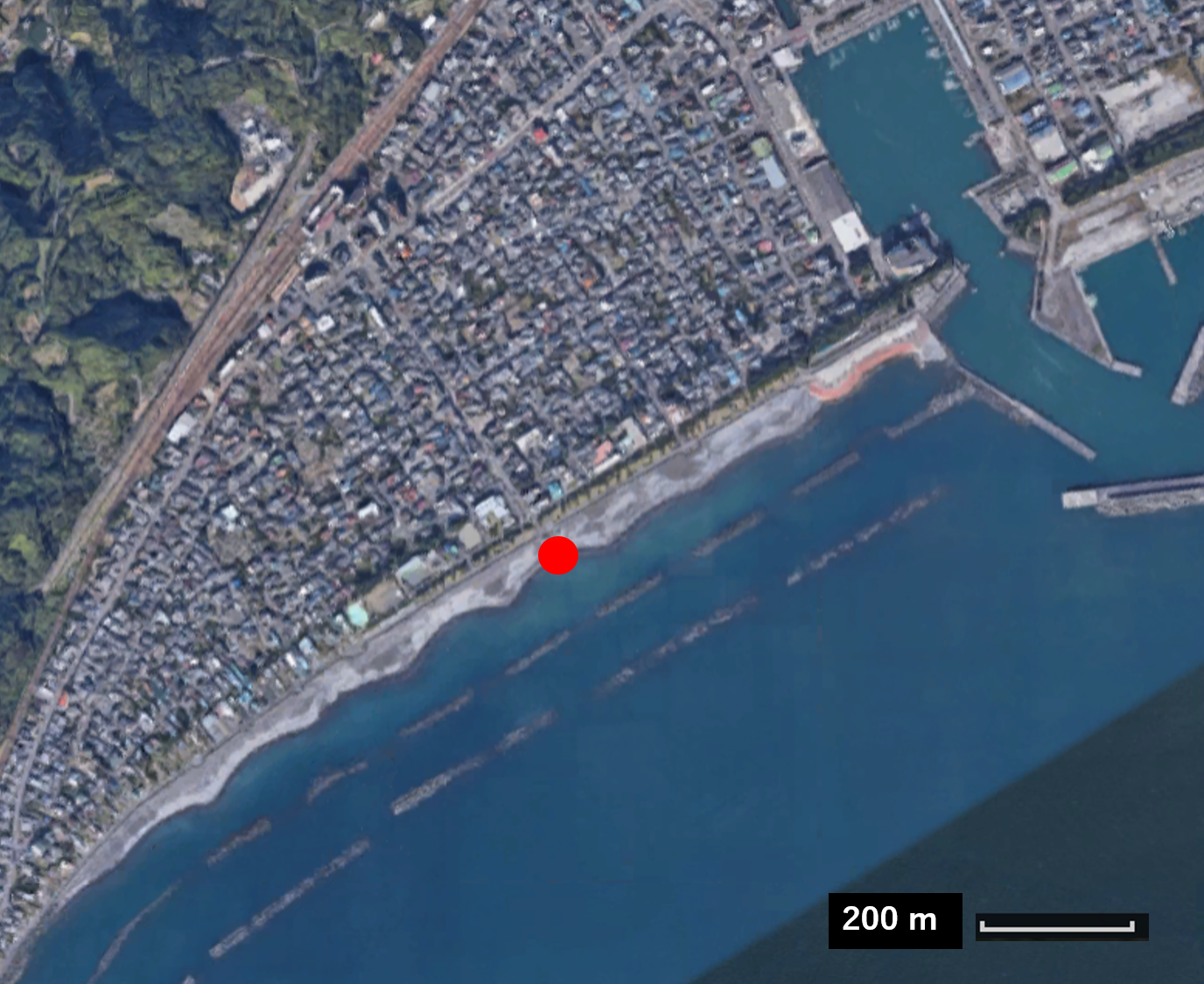
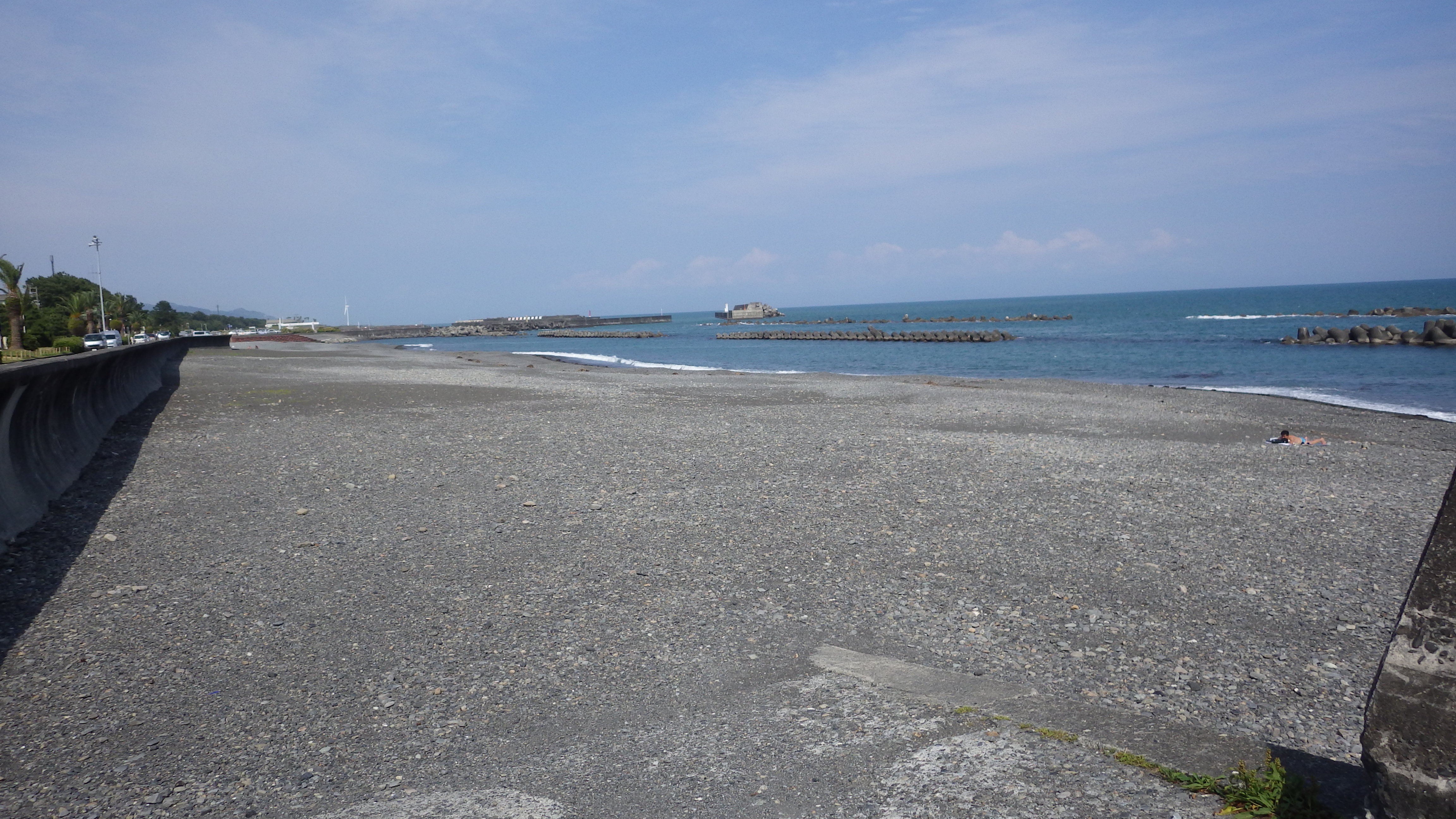
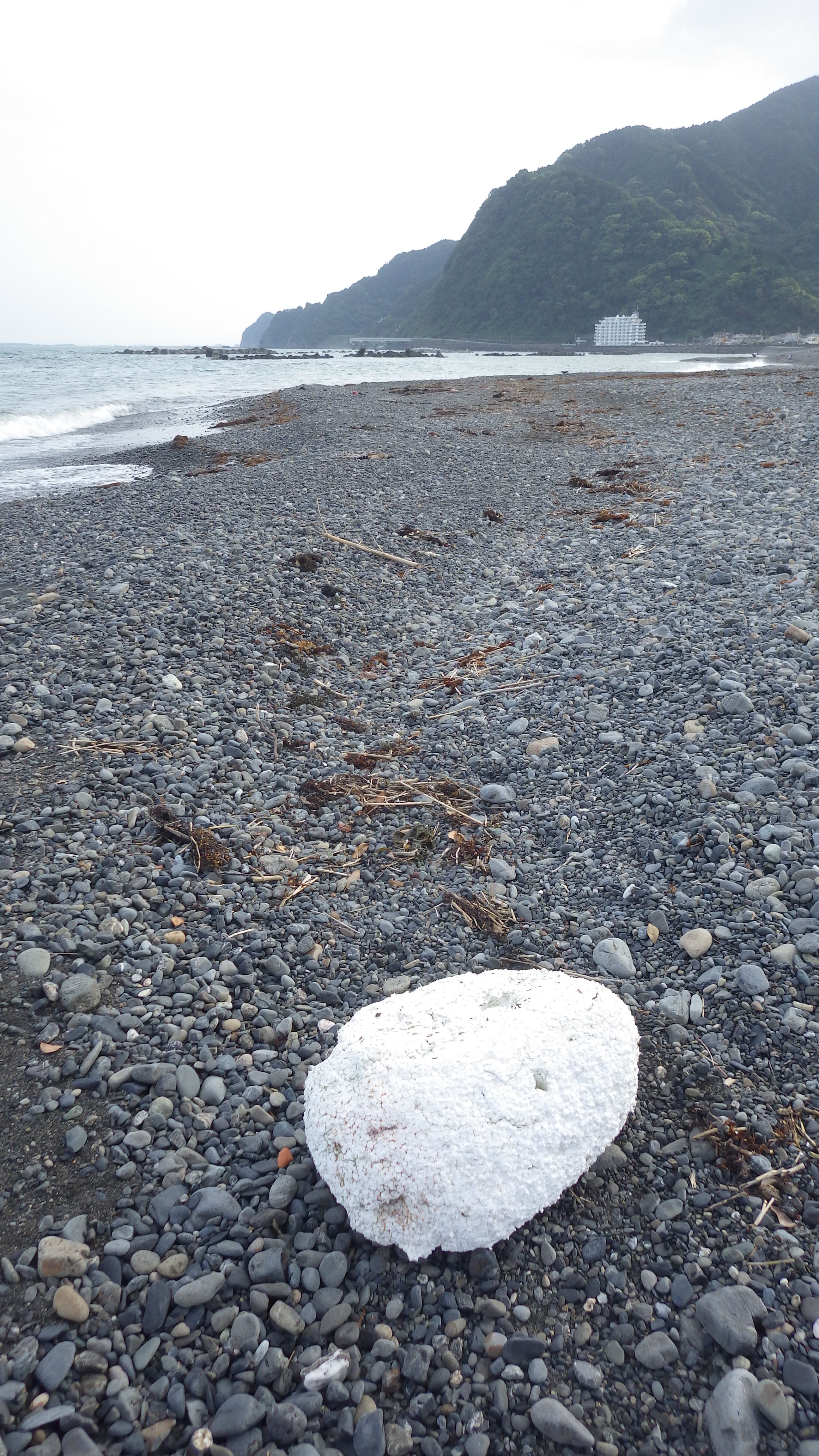
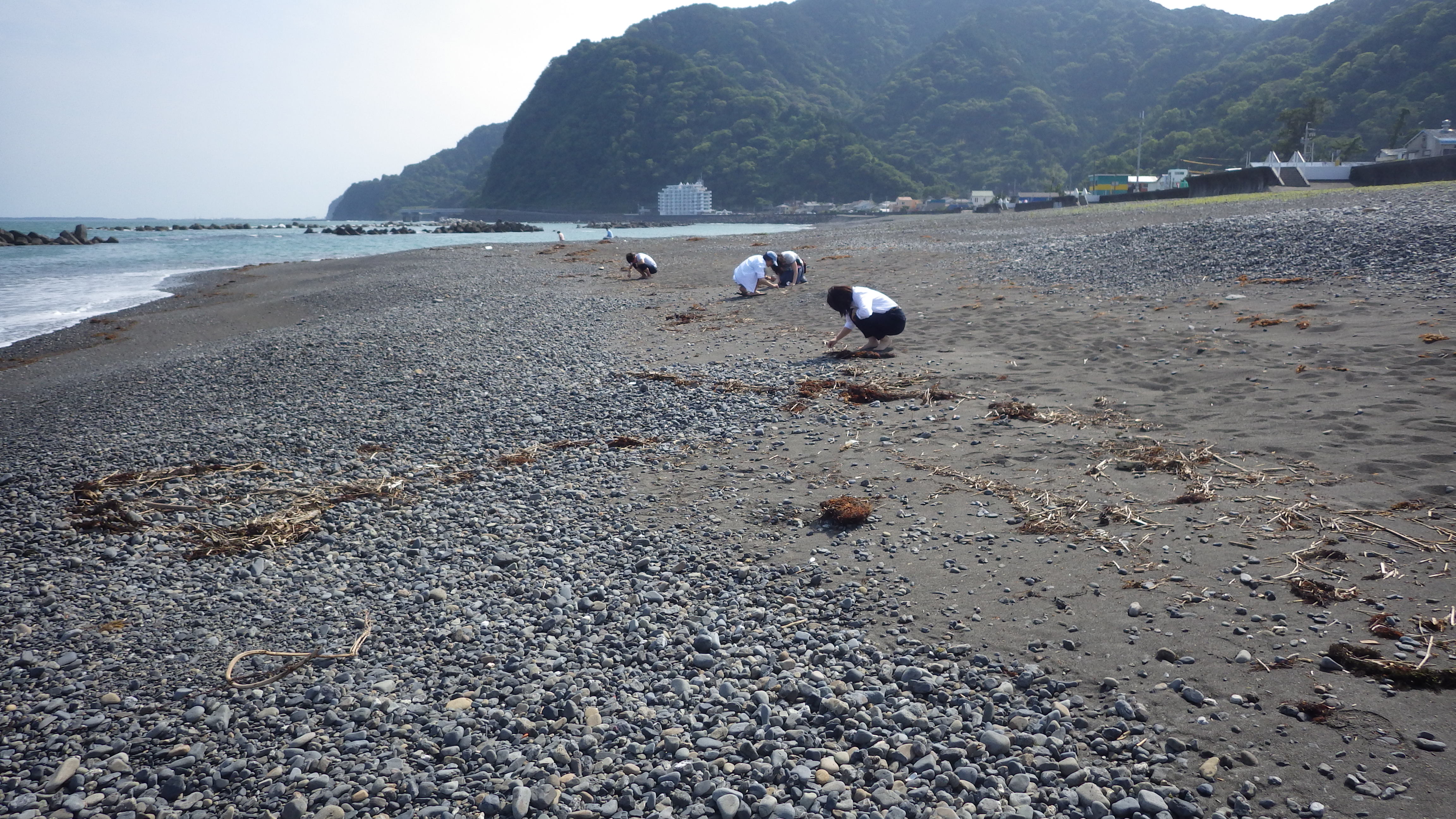
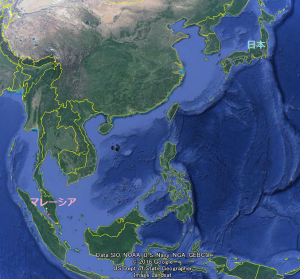
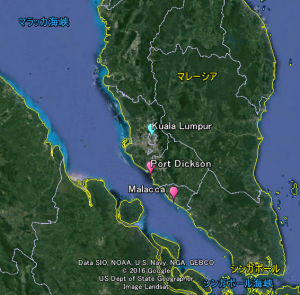

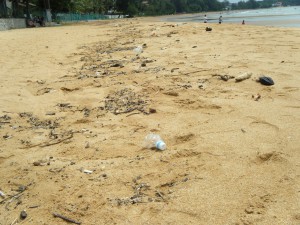
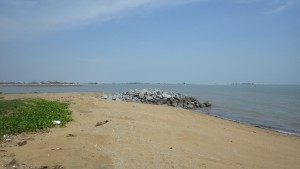
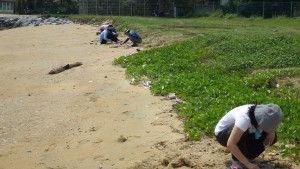







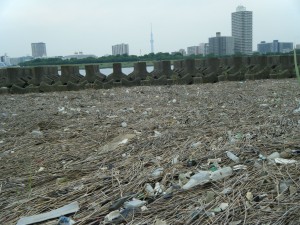
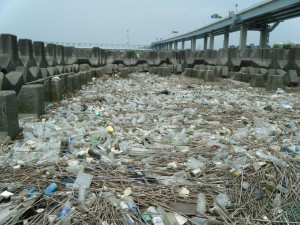
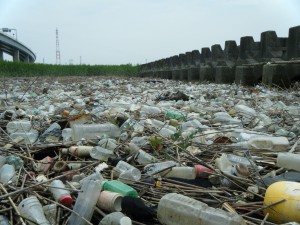 ペットボトルはリサイクル率が86%と一番高い製品である。しかし、使う量が増えれば増えるほど、リサイクルされずに川や海に流れ込むペットボトルが数が増えることをこの光景は物語っている。とにかく、もとを絶つこと、ペットボトルの使用を極力控えることが必要だと思う。大手ビールメーカーがビールをペットボトルで販売することを検討していると新聞記事で見た。とんでもない話しだ。この光景を見れば、ビールをペットボトルで販売することが愚かなことだと気がつくのではないだろうか。
ペットボトルはリサイクル率が86%と一番高い製品である。しかし、使う量が増えれば増えるほど、リサイクルされずに川や海に流れ込むペットボトルが数が増えることをこの光景は物語っている。とにかく、もとを絶つこと、ペットボトルの使用を極力控えることが必要だと思う。大手ビールメーカーがビールをペットボトルで販売することを検討していると新聞記事で見た。とんでもない話しだ。この光景を見れば、ビールをペットボトルで販売することが愚かなことだと気がつくのではないだろうか。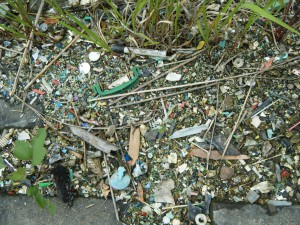 これらのプラスチックは紫外線や波の力で、細片化、微細化して、マイクロプラスチックとなる。実際にペットボトルなどの大きなプラスチックゴミの周辺をよく見ると、おびただしい数のプラスチック片、マイクロプラスチックが散乱している。形や色は東京湾で観測されるものに似ている。東京湾のマイクロプラスチックは、流域の陸上、私たちの生活からもたらされたものだ。日本周辺の海域のマイクロプラスチックが世界平均の30倍だという観測結果から、「それらは中国や東南アジアから海流で運ばれてきたからだ」と言って、「自分たち日本人は排出者ではない」というようなことが言われることもある。しかし、それが間違いであることも、この写真は物語っている。もちろん黒潮に乗って流れてくるものもあるだろう、しかし、東京湾について言えば、マイクロプラスチックの大半は流域から排出されたプラスチックがその起源であろう。我々自身の陸上での使い捨てプラスチックの使いすぎが原因なのである。No single-use plastics!
これらのプラスチックは紫外線や波の力で、細片化、微細化して、マイクロプラスチックとなる。実際にペットボトルなどの大きなプラスチックゴミの周辺をよく見ると、おびただしい数のプラスチック片、マイクロプラスチックが散乱している。形や色は東京湾で観測されるものに似ている。東京湾のマイクロプラスチックは、流域の陸上、私たちの生活からもたらされたものだ。日本周辺の海域のマイクロプラスチックが世界平均の30倍だという観測結果から、「それらは中国や東南アジアから海流で運ばれてきたからだ」と言って、「自分たち日本人は排出者ではない」というようなことが言われることもある。しかし、それが間違いであることも、この写真は物語っている。もちろん黒潮に乗って流れてくるものもあるだろう、しかし、東京湾について言えば、マイクロプラスチックの大半は流域から排出されたプラスチックがその起源であろう。我々自身の陸上での使い捨てプラスチックの使いすぎが原因なのである。No single-use plastics!